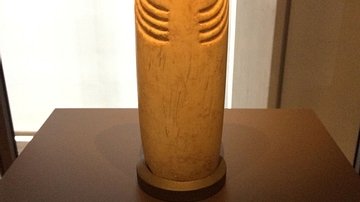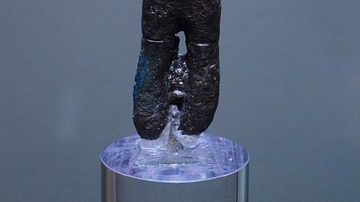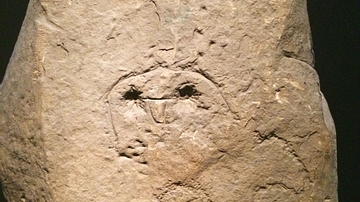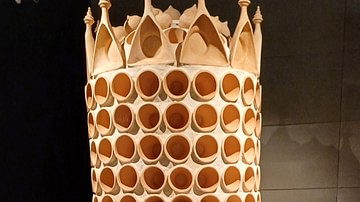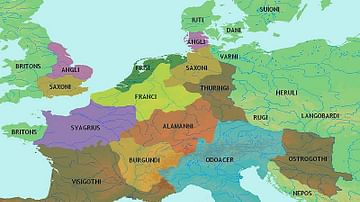Illustration
Clay figurine found in Chorvátsky Grob, Late Bronze Age.
Slovak National Museum, Bratislava.
Moon idols (Mondidole), also known as 'firedogs' (Feuerböcke), were clay figurines shaped like a dog or wolf, whose elongated, backward bending neck merged at the end with a wheel-like moon disc. These zoomorphic, surreal statues are among the most characteristic grave goods remaining from the Urnfield Culture, the Late Bronze Age culture of Central Europe between the 14th and the 8th centuries BCE that partially overlapped with the succeeding Hallstatt Culture. Named after the practice of using urns to bury the cremated body of the dead, the Urnfield Culture is represented by burials containing decorated and plain pieces of pottery, various metal articles often gender-specific (e.g. hairpins and jewelry for females, swords, pins, and iron 'wights' for men), and ritual artefacts such as vessels and idols.
About the Author
Photo Location
This photograph was taken at the following location:
References
- (PDF) Burial Mounds and Social Status in Sopron-Burgstall Cemetery, accessed 6 Dec 2024.
- Simon Matzerath. "Feuerböcke und Mondidole aus Gräbern-Ein Beitrag zum Symbolgut der späten Bronze- und frühen Eisenzeit Mitteleuropas." Archaeologische Informationen, vol. 32, 2013, pp. 165-172.
Cite This Work
APA Style
Choubineh, N. (2024, December 11). Moon Idol from Central European Bronze Age. World History Encyclopedia. Retrieved from https://www.worldhistory.org/image/19756/moon-idol-from-central-european-bronze-age/
Chicago Style
Choubineh, Nathalie. "Moon Idol from Central European Bronze Age." World History Encyclopedia. Last modified December 11, 2024. https://www.worldhistory.org/image/19756/moon-idol-from-central-european-bronze-age/.
MLA Style
Choubineh, Nathalie. "Moon Idol from Central European Bronze Age." World History Encyclopedia. World History Encyclopedia, 11 Dec 2024. Web. 15 Apr 2025.




